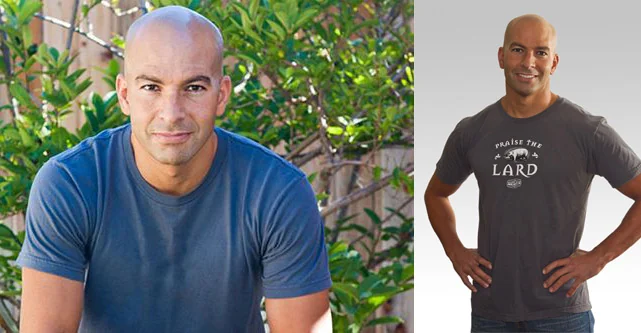In this article, we will look at the supplements that Silicon Valley entrepreneur Bryan Johnson takes daily.
Whilst it amounts to over 100 pills each day, it can be broken down into 40 over-the-counter supplements and 4 prescription drugs (discussed separately).
More broadly, we can separate the supplements into 3 categories:
- Longevity Supplements – supplements that are taken specifically for their potential to increase lifespan or improve healthspan.
Example: Ca-AKG, which when tested in mice, increased lifespan by 5% in male mice and 10% in female mice. - Supplements for specific issues – Plants, herbs and other compounds that are taken to address specific issues.
Example: Viviscal, which Bryan takes, contains a blend of shark and mollusk powder, and is marketed to improve hair thickness. - Offsetting dietary insufficiencies – vitamins, minerals and other compounds used to offset any dietary deficits and maintain overall health. Whilst these are important, they’re arguably not the most exciting.
Example: B vitamins and omega-3 fatty acids. These are crucial for many functions and harder to get on the plant-based diet Bryan consumes.

Whilst we will analyze all the supplements that Bryan takes, we will begin with arguably the most exciting group above, those taken broadly for longevity.
N.B. Exactly which supplements should be on this list can be debated, but we have selected the following based on their ability to compensate for age-related decline or, extend lifespan in mice studies:
- Calcium Alpha-ketoglutarate (Ca-AKG)
- Nicotinamide Riboside (NR) and Nicotinamide Mononucleotide (NMN)
- Taurine
- Nordihydroguaiaretic Acid (NDGA)
- Aspirin
After these, we will move on to the rest.
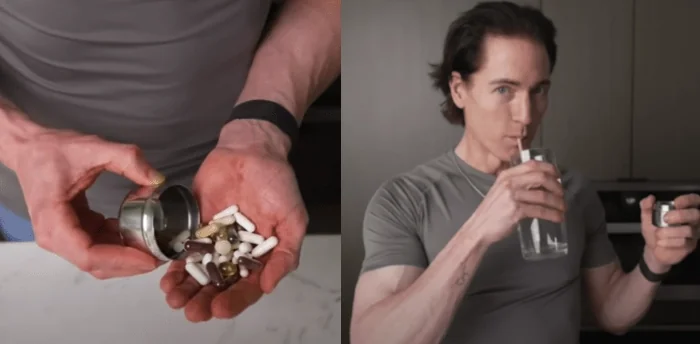
Before we do that, below is a mega-table of everything on the Bryan Johnson supplement list, along with sources, or best guesses, as to why he takes them. They’re color-coded into the following categories:
- Supplements for longevity
- Supplements for specific issues
- Supplements to offset dietary insufficiencies.
Click to Collapse Table
| Supplement | Daily Dose | Rationale + Source |
|---|---|---|
| Ca-AKG | 2 grams | Improved frailty index + increased lifespan in mice. Source: YouTube video |
| NR or NMN | 375 mg or 500 mg (6x wk) | For raising NAD to more youthful levels. Source: monthly notes |
| Taurine | 2 grams | Increased lifespan in mice. Source: Twitter |
| Nordihydroguaiaretic Acid | 50 mg | Increased lifespan in mice. Source: Twitter |
| Aspirin | 81 mg (3x wk) | Our guess: Due to increased longevity in a mouse study + possible reduction in CVD events. Source: see aspirin section |
| Ashwagandha | 600 mg | Reduced anxiety, improved cortisol management, improved sleep, increased testosterone. Source: Supplements video |
| BroccoMax / Sulforaphane | 17.5 mg | Our guess: BroccoMax contains sulforaphane which has a wide range of benefits, including chemoprotection. See sulforaphane section. |
| Cocoa Flavanols | 500 mg | Heart and brain health. Source: Supplements video |
| CoQ10 | 100 mg | Our Guess: To support mitochondrial + cardiovascular health *and also* Bryan says; for oral health. See CoQ10 section. |
| DHEA | 25 mg | Bryan says for blood glucose regulation + (our guess) potentially to support testosterone production. Source: Bryan’s Tweet1 & Tweet2 |
| N-Acetyl-L-Cysteine (NAC) | 1,800 mg | Our Guess: NAC boosts glutathione, which can support immune health and the bodies ability to handle environmental toxins. See: NAC section |
| Hyaluronic Acid | 300 mg | For joint health. Source: Supplements video |
| L-Tyrosine | 500 mg | Our Guess: Tyrosine is a precursor to dopamine, one of our key motivation/reward pathways. So it’s possibly taken to support that. |
| Genistein | 125 mg | Bone health (at minimum). Source: Bryan on Twitter |
| Viviscal | 1 pill | Hair Thickening. Source: viviscal product description |
| Glucosamine Sulphate 2KCL | 1,500 mg | Our Guess: It’s commonly taken in order to help in the development and repair of cartilage, which can wear with age. See Glucosamine section. |
| Turmeric with piperine | 1 gram | Inflammation, joint health and liver health. Source: Supplements video |
| Turmeric | 1 gram | Blood glucose regulation + anti-inflammatory. Source: Bryan’s Tweet1 & Tweet2 |
| Garlic | 2.4 g | Liver enzymes and cholesterol management. Source: Supplements video |
| Garlic (kyolic) | 1.2 g | Liver enzymes and cholesterol management. Source: Supplements video |
| Ginger Root | 2.2 g | Blood glucose regulation. Source: Bryan’s Tweet1 & Tweet2 |
| Melatonin | 300 mcg | Our guess. Melatonin production declines with age. See: melatonin section. |
| Vitamin B Complex | .5 pill (2x per week) | Our Guess: Whilst Bryan takes a liberal amount of many supplements, he takes a relatively low dose of B vitamins. Presumably due to bio-feedback from tests |
| Vitamin C | 500 mg | Our Guess: Vitamin C is an essential micronutrient with a wide range of uses in the body. |
| Vitamin D-3 | 2,000 IU | Our Guess: Bryan is careful about UV exposure, and thus is making up any lack of sun by adding a vitamin D supplement. |
| Vitamin E | 67 mg | Essential Micronutrient + possible reduced stroke risk. Source: Bryan on Twitter |
| EPA & Vit E | EPA 500 mg / vit E 5 mg | Improved liver enzymes and arterial health. Source: Supplements video |
| Iodine as potassium iodide | 125 mcg | Our Guess: Iodine is needed to make thyroid hormone. Bryan has hypothyroidism, so he may be taking it to support thyroid function. |
| K2-MK4 | 5 mg | At minimum – bone health. Source: Bryan on Twitter |
| K1 | 1.5 mg | At minimum – bone health. Source: Bryan on Twitter |
| K2 MK-7 | 600 mcg | At minimum – bone health. Source: Source: Bryan on Twitter |
| Lithium, as lithium orotate | 1 mg | Our Guess: There’s existing literature suggesting low dose lithium supplementation improves or helps stabilize people’s mood. |
| Lycopene | 10 mg | Our Guess: Lycopene-rich foods are found to prevent or attenuate aging disorders in various research. |
| Lysine | 1 gram | Our Guess: There’s existing literature suggesting the amino acid L-Lysine can help in the control of viral outbreaks. |
| Proferrin | 10 mg | Our Guess: Bryan doesn’t eat red meat, or flour fortified with iron, so it’s possible he takes this to ensure he gets enough iron. |
| Lutein & Zeaxanthin | 20 mg (L) / 4 mg (Z) (3x week) | Our Guess: Zeaxanthin and Lutein are carotenoids associated with better eye health. |
| Zinc | 15 mg | Bryan mentions using zinc as part of his blood glucose optimization. Also, zinc is an essential micronutrient that we don’t always get enough of. |
| Vitamin B12 | Dose ? / (1x wk) | Our Guess: It’s commonly understood that on vegan diets, B12 needs supplementing |
| Pea Protein | 29 grams daily | For achieving current protein target of around 1.6g/kg Source on 1.6g/kg – Twitter |
Click to Collapse Table
Longevity Supplements
Calcium Alpha-ketoglutarate (Ca-AKG)
Alpha-ketoglutarate (AKG) is a key intermediate molecule in the tricarboxylic acid cycle, also known as the Krebs cycle or citric acid cycle. This is a fundamental biochemistry process our cells use to break down nutrients and create ATP, the primary energy source for our cells.
However, AKG levels significantly decline as we age. Estimates show a 10-fold decline between ages 40 and 801.
AKG is interesting because it’s not a compound we consume directly in our diet. Instead, it can be created, after several intermediary processes, from protein, fat and carbohydrates. So when natural production decreases, we can’t simply consume more of it, such as how you can consume more of a vitamin or mineral. This leaves supplementation as a primary option for boosting levels.
Recent studies have shown that supplementing AKG mimics caloric restriction by stimulating the production of reactive oxygen species (ROS) and activating the body’s defense mechanisms[2]. This could lead to a longer and healthier lifespan.
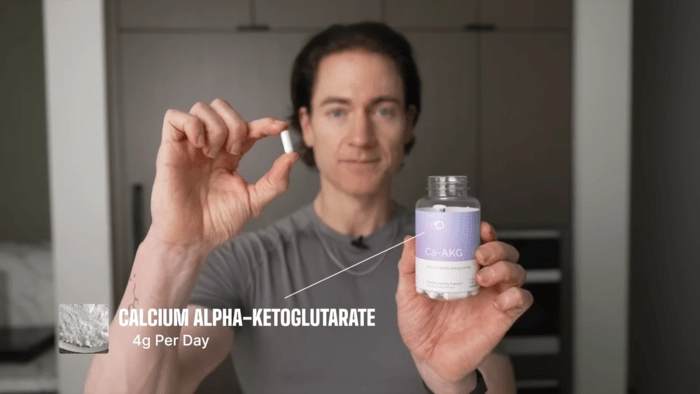
Brian Johnson decided to include calcium AKG (Ca-AKG) in his supplement routine. He started using it in March 2023, with a dose of 4 grams daily (2g morning/2g at noon).
Bryan posted a short YouTube video explaining that Ca-AKG showed promise in one mouse study. He mentioned that the results were equivalent to 20 human years, but we are unsure where that number comes from.
The 2020 study he referenced concluded that supplementation with Ca-AKG extended the relative lifespan of female mice by 10% and 5% in male mice[3]. In addition, the results showed that Ca-AKG significantly reduced morbidity and frailty. Ca-AKG extended the lifespan of mice and also decreased the time animals were vulnerable to diseases and age-related decline.
Supplementation with Ca-AKG reduced systemic inflammation in all mice, while T cells of female mice produced higher levels of anti-inflammatory cytokine IL-10. The authors of the study speculate that this could be the reason female mice experienced a longer lifespan extension. However, that remains to be seen with future research.
Ca-AKG supplementation also showed great potential in studies using other model animals. For example, it increased the lifespan of roundworm (Caenorabditis elegans) by up to 50% and fruit fly (Drosophila melanogaster) 23% in females and 2.8% in males[4.5].
However, beneficial effects in animal models don’t necessarily translate to human benefits.
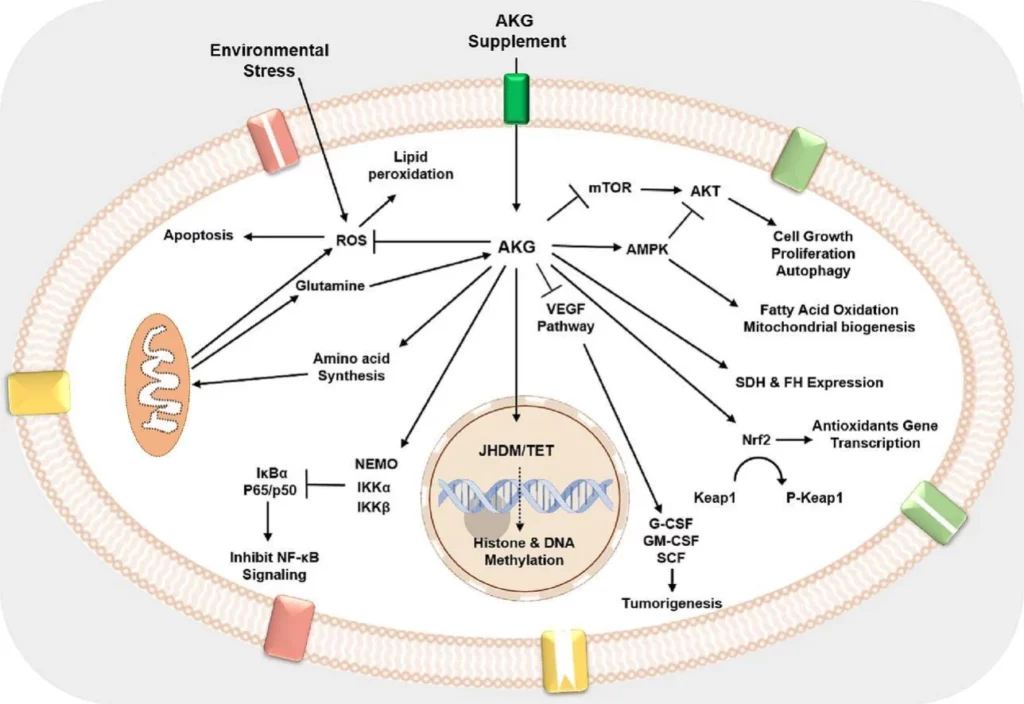
The one retrospective study we have in humans claims that using Ca-AKG (for seven months) could reduce perceived biological aging by eight years on average. These conclusions were based on DNA methylation, which is a common surrogate biomarker for aging. But we need human clinical trials to confirm these benefits.
Bryan Johnson lowered his dose of Ca-AKG in April 2023 from 4g to 2g per day (1g in the morning and 1g at noon). According to his Blueprint Protocol monthly notes, he experienced a slight increase in resting heart rate and wanted to isolate the effect.
He also discontinued using Ca-AKG for 14 days to get a more accurate reading of his blood glucose level. That’s because AKG affects blood glucose levels (in animal studies)[6].
Bryan hasn’t talked about Ca-AKG since then, but it’s still a part of his supplement routine.
Dose: 2g per day
Examples of Ca-AKG brands include:
- Double Wood – Ca-AKG – 500 mg * 180 capsules
- DoNotAge – Ca-AKG – 400 mg * 60 or 360 capsules (can ship from within EU) – 10% off with this discount code
- vitalityPro – Ca-AKG – 500 mg * 120 or 240 capsules (ships from UK)
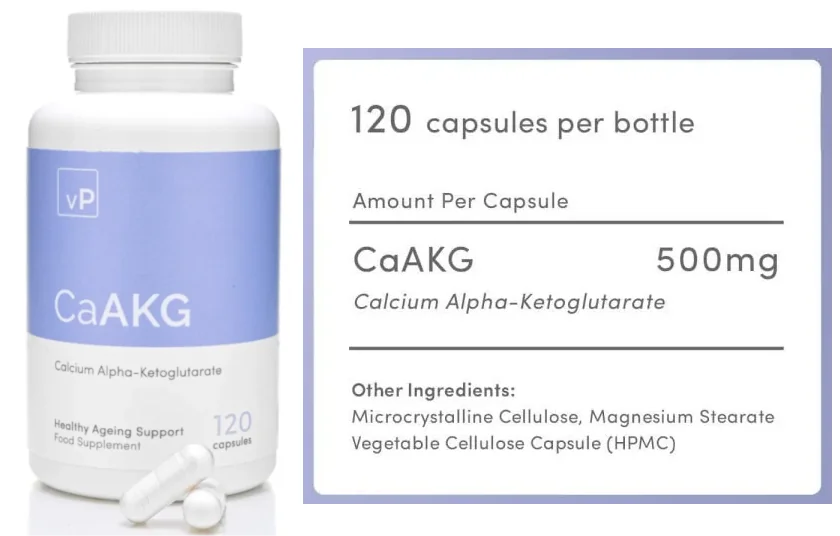
Nicotinamide Riboside (NR) and Nicotinamide Mononucleotide (NMN)
Nicotinamide riboside (NR) and nicotinamide mononucleotide (NMN) are two of the most popular NAD-boosting supplements. NAD is found in all living cells, where it plays a crucial role in energy production, gene expression, DNA repair, and various other cellular processes.
NAD levels are estimated to decrease by nearly half between the ages of 20 and 50[7]. Researchers suggest that this rapid decline of NAD could play a major role in the aging process due to limited energy production, genomic signaling, and DNA repair.
Supplementation with precursors such as NR and NMN could boost NAD back to youthful levels. Interestingly, Bryan appears to have data to back this up!
Blueprint’s monthly notes show Bryan’s intracellular NAD was first recorded at 25.9µM, with a target set for 34µM. He began with a daily dose of 250mg of Nicotinamide Riboside, and then quickly increased it to 500mg, and then 750mg per day.
After nine months of supplementation, Bryan reported achieving, and even extending his set goal. His NAD levels increased to 36µM, which is equivalent to a 26-year reduction in his biological age, in the context of natural NAD production.
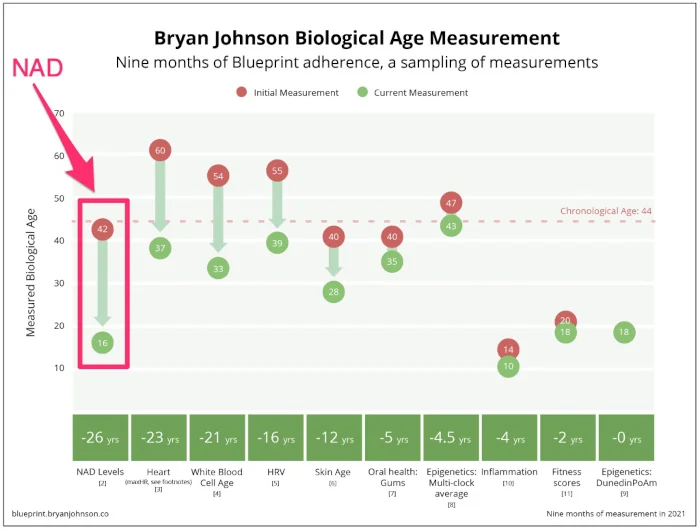
Source: Blueprint Monthly Notes
There has been a debate in the anti-aging community about whether NR or NMN are more effective for boosting NAD levels.
Bryan addressed this in a Youtube video, stating that he gets a lot of questions on the NR vs NMN debate. He used each supplement for 90 days and estimated the effects on NAD levels.
The results showed that both supplements were effective in getting his NAD levels to age 16 equivalent. The tests put his recent NAD levels at 54.6μM, which is a two-fold increase after almost two years of supplementation.
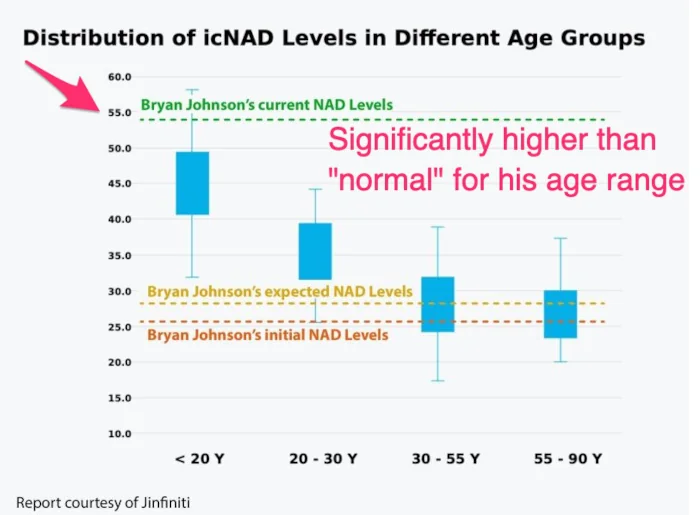
Source: Blueprint Monthly Notes
These findings are consistent with a recent study that tested the effects of different precursors on NAD levels. The results showed that NMN and NR have similar effects, which puts them both as a great option for boosting NAD.
Dose: Bryan currently takes both NR and NMN. He takes 375mg of NR in the morning and an additional 375mg of NR or 500mg of NMN at 11AM six days a week.
Examples of NMN brands include:
- Renue – NMN powder – 100 grams total
- Renue – NMN – 125 mg x 240 capsules
- Super NMN – 500 mg x 90 capsules
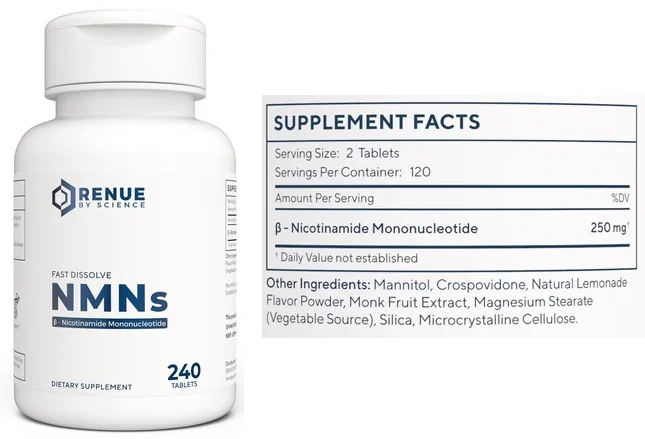
Examples of NR brands include:
- Niagen – NR – 500 mg x 60 capsules
- ProHealth – NR – 500 mg x 60 capsules
- Renue – NR (Liposomal) – 300 mg x 90 capsules
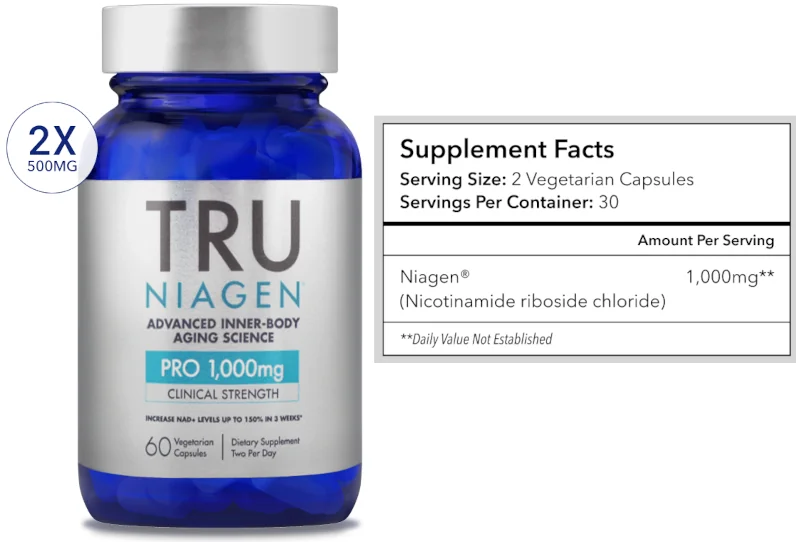
Taurine
Taurine is a naturally occurring amino acid found in the heart, brain, muscles, and other tissues.
Taurine is involved in a range of physiological processes, including supporting the function of the heart, muscles, immune system, reproductive system, and central nervous system. It acts as an antioxidant and plays a role in energy metabolism and various aspects of our health[8].
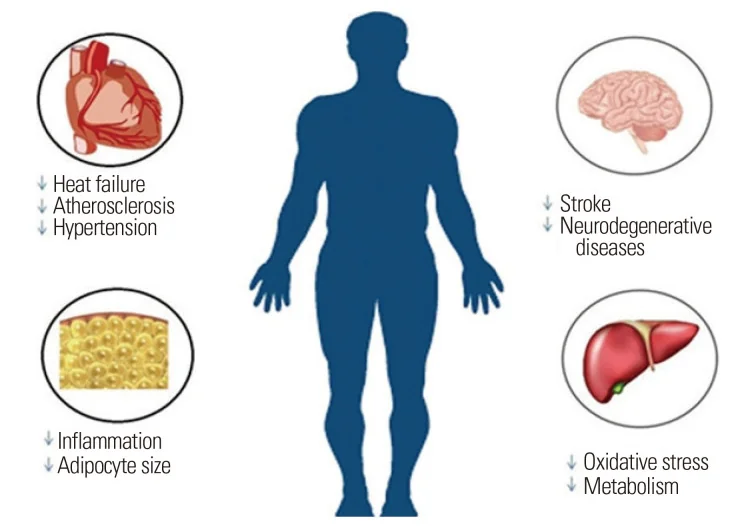
Our bodies synthesize taurine from cysteine and methionine in the liver[9]. However, we also consume taurine through diet. Some taurine-rich foods include dark chicken meat, turkey, shellfish, clams, eggs, and mussels.
Taurine levels decline with age and researchers want to see whether supplementing taurine could help combat aging. A recent study showed that taurine supplementation increased the median lifespan of mice by 10 to 12%[10].
What’s even more interesting is that mice appeared healthier. Study authors observed improved functioning of the brain, muscle, bone, pancreas, fat, gut, and immune system, indicating an overall increase in health span.
As soon as Bryan saw the results of this study, he increased his taurine dosage from 1g to 3g per day. He created a post on X, stating this change and highlighting that taurine may reduce all-cause mortality.
He hasn’t yet made an update on the effect that increasing his dosage had (if any).
Dosage: 3 grams per day
Examples of Taurine brands include:
Capsules
- NOW – Taurine – 1,000 mg – x100 veg capsules
- Life Extension – Taurine – 1,000 mg – x90 veg capsules
Powders
- NOW – Taurine – 8 oz (227g) powder
- Life Extension – Taurine – 10.6oz (300g) powder
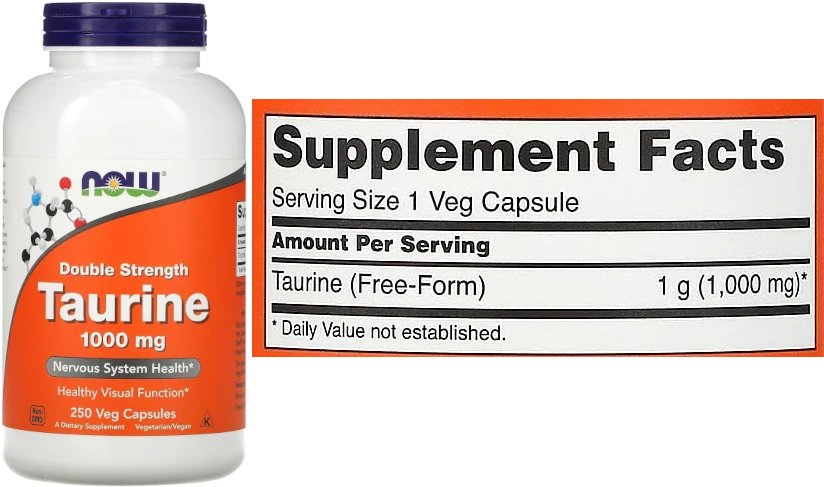
Nordihydroguaiaretic Acid (NDGA)
Nordihydroguaiaretic acid (NDGA) is a lignin natural found in the leaves and twigs of the creosote bush (Larrea tridentata). It is known for its antioxidant and anti-inflammatory properties and has been studied for its potential health benefits. Lately, researchers have also studied its effects on longevity.
Back in April 2023, Bryan announced on X that he started taking 50mg of NDGA per day. The reason according to the post is that NDGA ranks 36th in wild-type mouse studies. He then mentions an increase of 13% in median lifespan and 7% longer maximum lifespan.
Bryan may be referring to this study, where researchers observed positive effects of NDGA and aspirin on the longevity of male mice.
In the same post, Bryan mentions that NDGA is a potential autophagy enhancer. According to a recent study, NDGA inhibits the epigenetic regulator p300[11]. P300 is a potent blocker of autophagy, therefore NDGA induces this process.
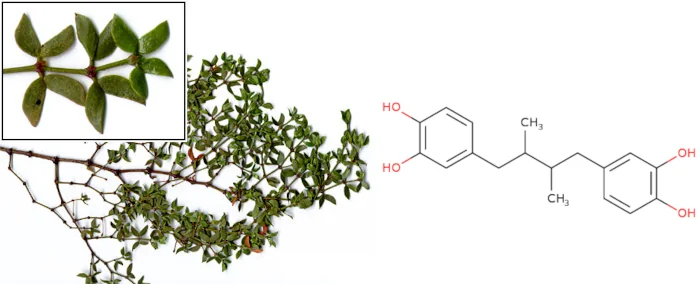
Recent evidence shows that autophagy may play a crucial role in extending lifespan in animals[12].
Interestingly, multiple studies reported NDGA supplementation to boost lifespan only in male mice, while females remained widely unaffected[13,14].
Several reports warn that the continuous consumption of NDGA could lead to liver toxicity and kidney dysfunction[15]. Bryan acknowledges this in his original post and closely monitors all parameters to assess safety. In addition, he wants to investigate how NDGA stacks with other lifespan-promoting supplements like metformin, rapamycin, etc.
Dose: 50 mg per day
Where to buy? NDGA is currently listed by the FDA as a substance “prohibited for use in human food”, and the FDA considers supplements as food (source). It’s therefore not possible to buy as an over-the-counter supplement. This is likely due to the aforementioned (dose-dependent) toxicity risks.
Aspirin
In a TikTok talking about his daily routines for optimal health, Bryan mentions being diagnosed with hypothyroidism at 21 and taking daily prescription medication. In addition, he notes taking low-dose aspirin (81mg) three times a week because there was some good evidence to support it.
In fact, such low doses of aspirin are often used to lower cardiovascular disease risk and the incidence of cardiovascular events[17,18].
Although heart disease is a leading cause of death in the US, considering Bryan’s healthy lifestyle, it would seem like an overkill to take aspirin for that (but we don’t rule it out)[19]. Especially since aspirin is a blood thinner that increases the risk of bleeding and major bleeding events.
The more probable reason for Bryan to take aspirin is its potential to increase lifespan. Treatment with aspirin increased the median survival in male mice by 8%, which is a significant improvement[14].
Dose: 81 mg – 3x week
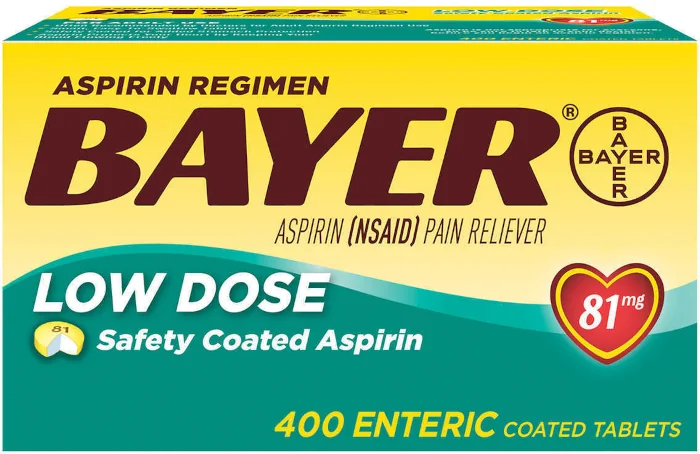
Supplements for Specific Issues
Ashwagandha
According to the Blueprint, Bryan takes 600mg of ashwagandha every day upon waking up. In a video explaining the rationale behind taking some of the supplements from his routine, Bryan mentions that taking ashwagandha could reduce anxiety, improve cortisol management, support sleep quality, and boost testosterone levels.
This adaptogenic herb has a long history of use in Ayurvedic medicine. But lately, more researchers have focused on its ability to support stress resilience, cognitive function, and mental performance.
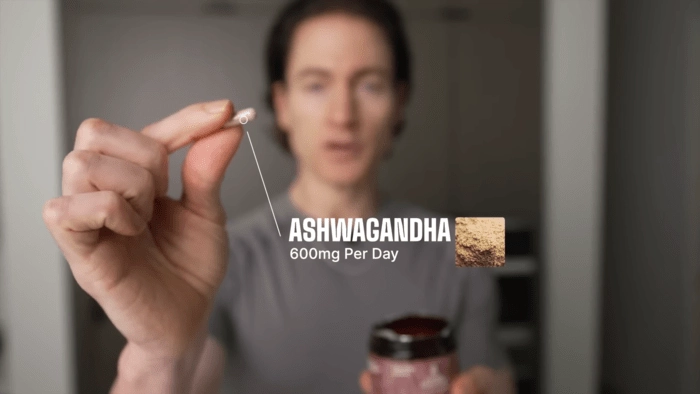
A recent review concluded that ashwagandha had several therapeutic effects[20]. Therefore, it could be beneficial for:
- Managing stress
- Improving sleep
- Reducing anxiety
- Supporting muscle strength
- Reducing inflammation
- Aiding exercise recovery
- Managing hypothyroidism
However, we need more clinical trials to discover how effective ashwagandha is for each of these.
Dose: 600 mg of KSM-66 type Ashwagandha
Examples of KSM-66 brands include:
- Jarrow – Ashwagandha (KSM-66) – 300 mg per capsule
- Natural Factors – Ashwagandha (KSM-66) – 600 mg per capsule
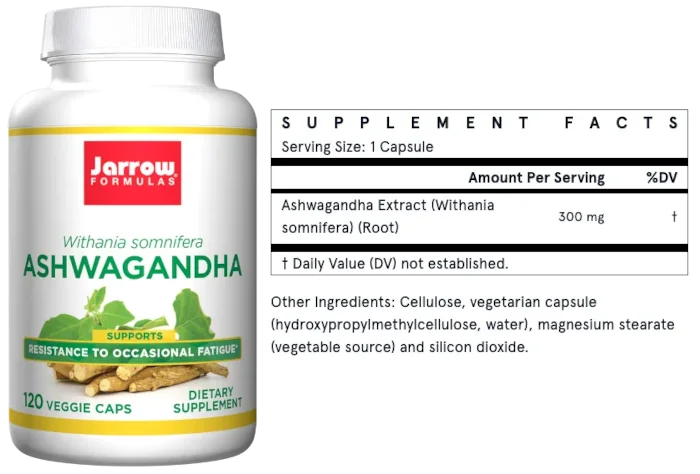
Sulforaphane
Bryan eats broccoli every day, and he also takes 17.5 mg of BroccoMax twice a day. This supplement is made from broccoli seed extract and packed with sulforaphane glucosinolate and myrosinase.
Sulforaphane is interesting because it may support liver health and protect against various cancers, cardiovascular conditions, diabetes, and neurodegenerative diseases[21]. This compound also exhibits antioxidant, antimicrobial, anti-inflammatory, and anti-aging effects.
BroccoMax extracts sulforaphane from broccoli seeds, where it’s available in a stable form of sulforaphane glucosinolate, also known as glucoraphanin. In addition, BroccoMax contains myrosinase, which is an enzyme is needed to convert glucoraphanin into sulforaphane. Without the added myrocinase, we’d be reliant on myrocinase from our gut, which is limited[22].
Sulforaphane is also becoming one of the most promising compounds in anti-aging research. Recent studies have shown that supplementation with this compound extends life-span, supports healthy aging in roundworms, and slows down skin aging in mice[23,24]. That could be another reason why Bryan has decided to make BroccoMax a part of his routine.
Cocoa Flavanols
In the same Youtube video where Bryan explains why he takes 100+ supplements per day, Bryan mentions taking cocoa flavanols for heart and brain health. He takes 500mg upon waking and another 500mg with his 11AM meal.
According to current research, consuming cocoa flavanols could reduce systolic blood pressure and cardiovascular disease death by 27% compared to placebo[25,26]. In addition, flavanols help mitigate the effects of age-related decline on cognitive performance[27]. A recent study even suggests that lower consumption of flavanols can be linked to age-related memory decline[28].
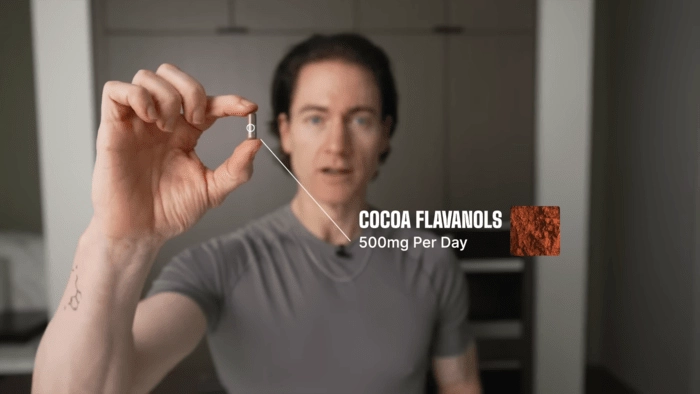
Since Bryan is trying to slow down and even reverse the effects of aging, we can see why he might include cocoa flavanols in his daily routine.
Coenzyme Q10 (CoQ10)
CoQ10 is a naturally occurring compound that plays a vital role in cell energy metabolism and protecting cells from oxidative damage.
Lack of CoQ10 has been linked with an increased risk of many conditions, such as diabetes, fibromyalgia, neurodegenerative diseases, or heart failure[29].
According to the Blueprint Protocol, Bryan takes CoQ10 in two forms; a supplement and a gel.
The supplement form may be taken for multiple reasons, including some of the benefits mentioned above.
However, the gel is specifically part of his oral health routine.
CoQ10 deficiency in the gums has been linked to inflammation and periodontal destruction[30]. Since CoQ10 is a potent antioxidant, oral supplementation or topical application of this compound can successfully reduce inflammation and suppress further periodontal degradation[31].
If you want to see what Bryan’s oral health routine looks like, check out the oral health section of the Blueprint.
Dehydroepiandrosterone (DHEA)
DHEA is a hormone produced mainly by the adrenal glands. It serves as a precursor for both male and female sex hormones, including testosterone.
Supplementation with DHEA has been shown to increase testosterone levels, especially in middle-aged men[32].
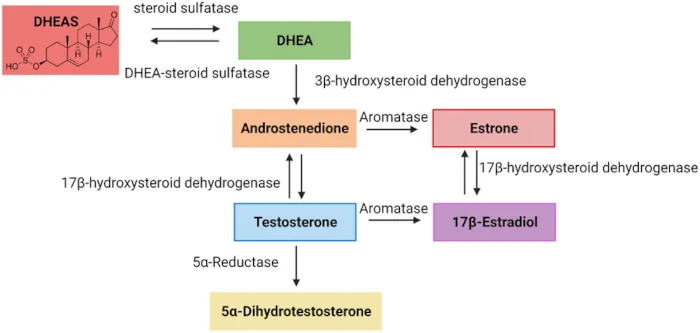
DHEA levels peak around the age of 25 and then slowly decline. Estimates report that the levels at 70-80 year olds could be only 10-20% of those in young adults[33].
Bryan mentions taking DHEA as part of his blood glucose optimization efforts. He consumes 25mg daily, which is considered a low dose.
Older people taking DHEA supplements have lower insulin resistance and improved glucose tolerance[34]. But that’s probably not the only reason why Bryan takes DHEA.
This hormone has been linked to many potential health benefits, including[35]:
- Increased lifespan
- Better immune system response
- Increased muscle strength and bone density
- Reduced body fat
- Lower risk of adrenal insufficiency
- Reduced age-related skin atrophy
- Higher sexual satisfaction
- Reduced total cholesterol
- Lower risk of many conditions
Low DHEAS (DHEA sulfate) levels have been linked with a higher all-cause mortality risk in men[36].
In addition, DHEA supplementation has shown some potential in promoting longevity, as some preliminary research estimated that it could increase the lifespan of roundworms by 13.6%[37].
N-Acetyl-L-Cysteine (NAC)
Bryan takes 1,800mg of NAC two times a day. That’s probably because NAC is a powerful antioxidant that acts as a precursor to L-cysteine and stimulates glutathione biosynthesis[52]. Glutathione is one of the body’s most important antioxidants that protect cells from damage that contributes to aging and various diseases.
NAC is used to treat paracetamol overdose and help clear thick mucus in people with respiratory conditions[53]. But, because of its powerful antioxidant and anti-inflammatory properties, NAC could also be used to manage sleep apnea, male infertility, diabetic neuropathy, psychiatric disorders, influenza, and many other conditions[54].
Interestingly, research in roundworms has discovered NAC’s ability to activate the organism’s defenses against environmental stressors[55]. As a result, treatment with NAC extended the mean lifespan in roundworms by 30.5%.
It appears that NAC mimics dietary restriction, which is how it extends lifespan in roundworms[56].
Hyaluronic Acid
Bryan takes 300mg of hyaluronic acid with his 11 AM meal. He explains in this video that it’s for joint health support.
Hyaluronic acid is commonly found in skin, joints, and eyes. In the joints, it is part of the cartilage and synovial fluid that lubricates the joints and reduces friction and damage to bones and soft tissues.
Unfortunately, hyaluronic acid levels decrease with age, which is why supplementation could bring certain benefits. Research supports using oral hyaluronic acid supplements to relieve knee pain, reduce inflammation, and improve joint protection[58,59].
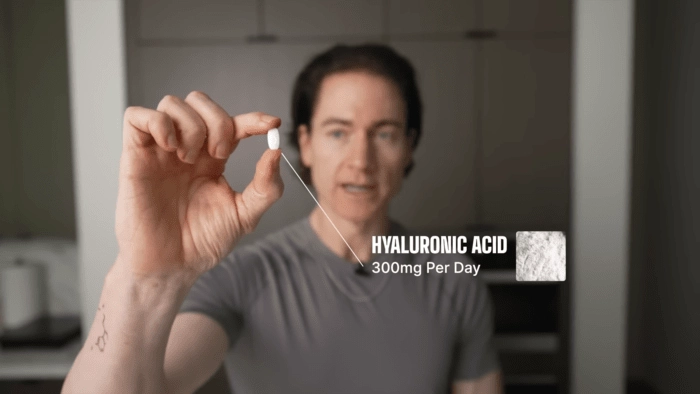
L-Tyrosine
Bryan takes 500mg of L-tyrosine with his 11 AM meal. This amino acid acts as a precursor for dopamine, a hormone vital for motivational control.

Although Bryan hasn’t mentioned the exact reason he takes L-tyrosine, one guess is that he wants to achieve better motivation or cognitive performance (or both).
Tyrosine supplementation helps improve cognitive performance, especially during stressful situations and cognitively demanding tasks[60]. In addition, tyrosine promotes cognitive flexibility, which is vital for multitasking[61].
Genistein
Genistein is a phytoestrogen commonly found in legumes like soybeans and coffee beans. In animal studies it has been found to have antioxidant, anti-inflammatory, cancer-protective, and anti-amyloid-β properties[38]. It also promoted autophagy.
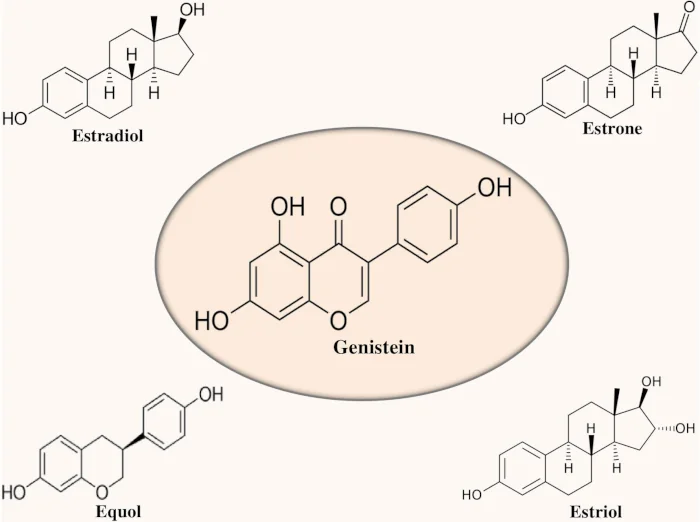
Image: Chemical structure of genistein and estrogens (source)
According to Blueprint’s monthly notes, Bryan started taking 150mg of genistein in the morning and at noon. However, his current protocol states taking “only” 125mg in the morning, so he must have adjusted the dosage in the meantime.
In his recent tweet, Bryan mentioned taking genistein for bone health. That’s probably because multiple studies in mice have observed positive effects of genistein supplementation on bone mineral density, bone mineral content, and breaking strength[39.40].
A two-year study in postmenopausal women confirmed that the same effects could be observed in humans. Genistein supplementation had positive effects on bone mineral density, highlighting this phytoestrogen as a potential aid in the treatment of osteoporosis.
However, there could be another reason why Bryan takes genistein.
A recent study has shown that mice supplemented with genistein have a 9.3% longer median lifespan. In addition, these mice exhibited decreased levels of systemic inflammatory cytokines and better overall health. Another interesting detail is that genistein improved gut health and reduced the incidence of gut dysfunctions like leaky gut and intestinal inflammation.
Viviscal
Bryan has recently started taking Viviscal two times a day. These tablets are supposed to nourish thinning hair and promote existing hair growth by providing necessary nutrients. That includes vitamin C, calcium, zinc, flax seed extract, horsetail extract, and AminoMar™ Marine Complex, which contains shark and mollusk powder (collagen sources).
A few studies support the positive effects of these supplements. For example, six months of supplementation with Viviscal improved total hair count and density in men with thinning hair[50]. In addition, fewer hairs were removed during the hair pull test, which supports Viviscal’s use against hair shedding.
Both men and women can experience the benefits of Viviscal, as this supplement could promote hair growth and decrease shedding in both sexes[51].
Glucosamine Sulfate 2KCL
Although Bryan doesn’t specifically mention why he takes glucosamine sulfate, these supplements are commonly used for joint health.
According to a 2020 umbrella review, glucosamine sulfate supports cartilage structure, reduces pain, improves function, and supports healthy glucose metabolism in people with knee osteoarthritis.
Glucosamine sulfate is co-crystalized with two moles of potassium chloride for stability. This form of glucosamine sulfate is as effective as others in relieving pain in people with mild to moderate knee osteoarthritis[45].
Another reason why Bryan may take glucosamine is its possible effect on mortality. According to a recent large-scale study, regular glucosamine consumption is associated with a lower risk of:
- All-cause mortality (15%)
- Cardiovascular disease mortality (18%)
- Respiratory mortality (27%)
- Digestive mortality (26%)
- Cancer mortality (6%)
Turmeric With Piperine + Turmeric
Turmeric is a part of Bryan’s blood glucose management protocol. In addition, in a Youtube video, Bryan mentions taking turmeric for inflammation, joints, and liver health.
He takes 1g of turmeric with piperine in the morning and another 1g of turmeric around noon.
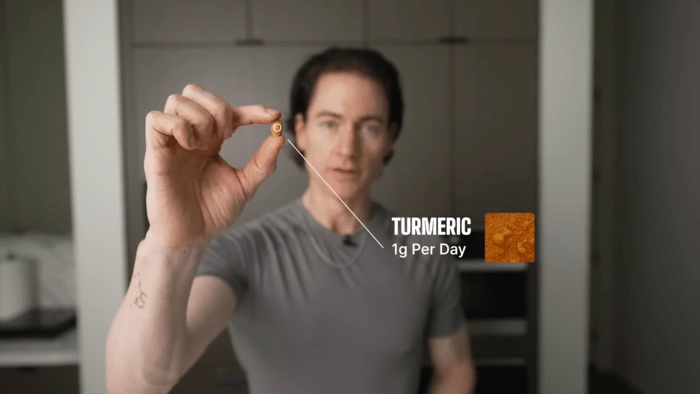
Turmeric has potent anti-inflammatory and antioxidant properties, which can be beneficial in the management of metabolic syndrome, arthritis, lipid levels, anxiety, cardiovascular diseases, and other conditions[46,47].
Curcumin, the main active component of turmeric, is quickly absorbed and cleared, which significantly lowers its bioavailability. However, adding piperine decreases curcumin’s clearance, increasing its bioavailability by as much as 2,000% (20x)[48].
The curcumin-piperine pairing helps improve glycemic control, lipid profile, and oxidative status by reducing oxidative stress[49]. As a result, this duo could be beneficial in managing many chronic conditions caused by low-grade inflammation.
Garlic
According to his Blueprint, Bryan takes an equivalent of 2.4g of odorless garlic supplement two times a day. He also takes 1.2g of kyolic garlic twice a day, and this aged garlic extract is supposed to be more potent.
He takes garlic supplements for liver enzymes and cholesterol management (source). He also includes garlic in his everyday diet.
Bryan was probably referencing the result of a study where fermented garlic extract (FGE) successfully reduced liver enzymes in people with elevated levels. The authors concluded that FGE could help with mild liver impairment.
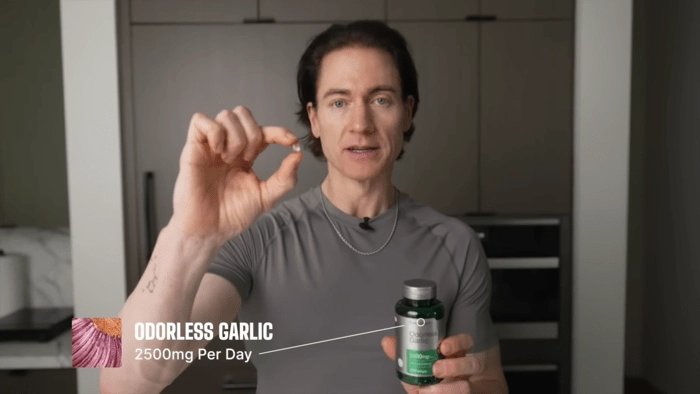
Ginger Root
Bryan takes 2.2g of ginger root two times a day. He states that the reason behind this is blood glucose level optimization.
Supplementing with 2g of ginger per day has been linked with reduced levels of fasting blood sugar, hemoglobin, lipoproteins, and a few other parameters in people with type 2 diabetes[41].
Similar effects can also be observed in non-diabetic adults, as 10 weeks of ginger root supplementation successfully decreased fasting blood glucose levels by up to 20%[42]. Other studies have confirmed these effects, and some research even hints that ginger root supplementation could improve insulin resistance[43,44].
Melatonin
Sleep quality is possibly the most important part of the Blueprint and the reason why Bryan takes 300mcg of melatonin before bed. In a recent Youtube video, Bryan mentions that out of all supplements, he gets the most questions about melatonin. That’s because there is a lot of evidence of melatonin’s positive effects on sleep quality, but they are usually modest[62,63].
However, after reviewing all the scientific evidence and comparing it with Bryan’s other lifestyle choices, his team has concluded that taking melatonin is relevant for him. Still, the dose of 300mcg is pretty low compared to dosages commonly used in human trials, where doses are usually measured in milligrams
Melatonin levels remain stable until 35 to 40 years when they slowly begin to decline[x]. This could be the main reason why Bryan takes this supplement.
Another reason why his team suggested taking melatonin could be due to intermittent fasting. The body starts producing more cortisol to counteract the effects of fasting, which could disrupt the sleep cycle[64]. Since Bryan understands the importance of sleep and recognizes that he needs to be intentional about rest, a small melatonin boost seems to be just what he needs.
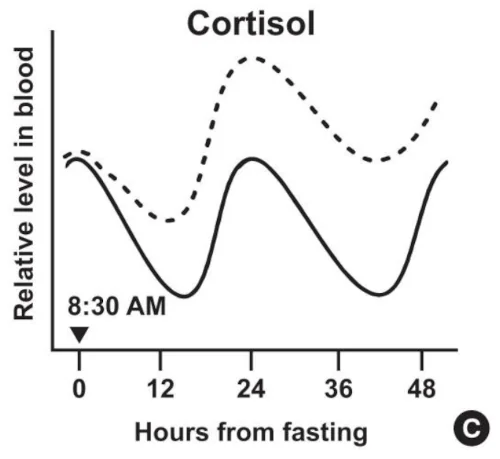
Image (source): Fasting (dashed line), regular feeding (solid line)
Supplements to offset dietary insufficiencies
Above we’ve covered 18 supplements, and the remaining 22 we’ve classed as vitamins, minerals, essential micronutrients or macronutrients that are taken to meet any gaps in the diet (or to reach levels that are not normally attainable through diet!).
In practice, these are run-of-the-mill vitamins, minerals, fish oil, and protein powder.
Whilst we won’t cover all of these, it makes sense to touch on protein powder.
(If you want more detail on the remaining supplements, see the above table which provides info on what and why he’s taking each one)
Pea Protein Powder
Whilst you can most certainly get protein from a plant-based diet, it’s not controversial to say that you need to work a bit harder than when eating animal products.
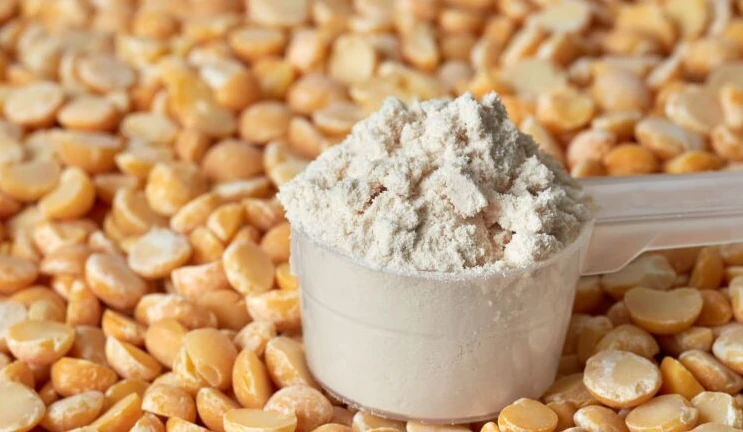
Therefore a cornerstone of Bryan’s diet is his pea protein supplementation. Helping him achieve his 1.6 gram of protein per kg of body-weight target.
So for example, if Bryan weighed 70kg, he’d be targeting 112 grams of protein per day.
Pea protein has similar properties to it’s dairy counterpart whey protein. Notable differences are that it’s lower in leucine, which is particularly important for muscle synthesis, and gram for gram it’s generally lower in essential amino acids.
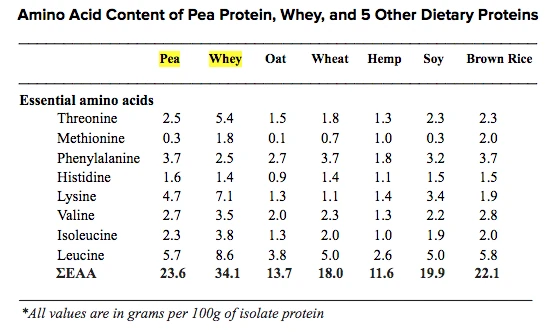
Examples of pea protein supplements that are low in carbs include:
- NOW Foods – Pea Protein – Chocolate, Vanilla or Unflavoured
- Swanson – Pea Protein – Unflavoured
- Truvani – Organic Pea Protein – Multiple Flavours
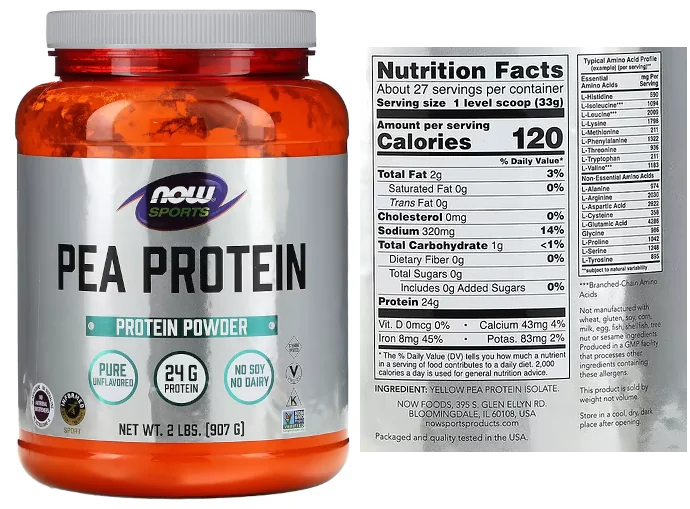
Roundup
Fundamentally we think what Bryan’s doing is fascinating and there is plenty to be learned from. However, there are so many different “ingredients” that it’s hard to know where to begin.
Hopefully, the above analysis of Bryan Johnson supplement list makes it seem less impenetrable and easier to learn from.
If you’ve got any questions or comments, please leave them below.
Further Reading
If you enjoyed this article, you may also enjoy:
- Bryan Johnson’s Prescription Drugs – what he takes and why
- Bryan Johnson’s Skincare Routine – what he uses and why
- Andrew Huberman’s Supplement List – What he uses and discusses
- David Sinclair’s Supplement List – What he uses and why
References
- 1Alpha-ketoglutarate as a potent regulator for lifespan and healthspan: Evidences and perspectives | Naeini, S et al. | 2023 | Experimental Gerontology


